Ayahuasca
Ancestral "Knowledge Medicine" of the Amazon
Ayahuasca
Ancestral "Knowledge Medicine" of the Amazon
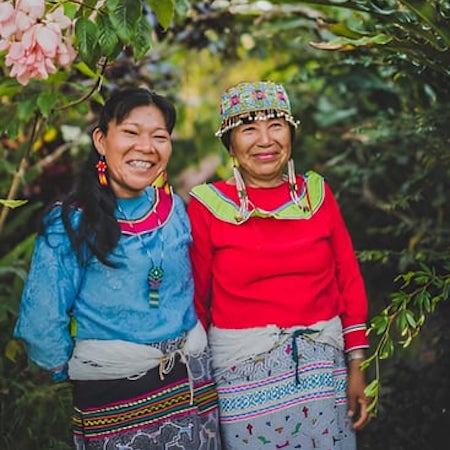
Vine of the Soul, Heart of Life
Ayahuasca is an ancestral Amazonian plant medicine, known for its power to open “shamanic vision” and reveal hidden aspects of the consciousness.
Considered a sacred spiritual teacher by indigenous shamans of the Amazon rainforest, this potent plant medicine brew has been used for centuries (and likely millennia) for different healing purposes.
The master Shipibo shamans (Onánya) are especially renowned for their advanced knowledge of Amazonian plant medicines. For them Ayahuasca represents the “Heart of Life.”
Vine of the Soul, Heart of Life
Ayahuasca is an ancestral Amazonian plant medicine, known for its power to open “shamanic vision” and reveal hidden aspects of the consciousness.
Considered a sacred spiritual teacher by indigenous shamans of the Amazon rainforest, this potent plant medicine brew has been used for centuries (and likely millennia) for different healing purposes.
The master Shipibo shamans (Onánya) are especially renowned for their advanced knowledge of Amazonian plant medicines. For them Ayahuasca represents the “Heart of Life.”
"Koshi medecinariki Ayahuasca"
"Ayahuasca is a powerful medicine"
MAESTRO ARTURO
Table of Contents
What is Ayahuasca?
Ayahuasca is a potent psychoactive brew made from decocting two Amazonian plants: the Banisteriopsis Caapi vine and leaves of the Psychotria viridis shrub (Chacruna). Chacruna contains the hallucinogenic compound dimethyltryptamine (DMT). The vine contains monoamine oxidase inhibiting (MAOI) harmalines which prevent the break-down of DMT, thus activating the psychoactive effect in the body. Together these plants have the potential to create powerful visionary effects. Interestingly, the Shipibo shamans believe the Banisteriopsis vine to be the main wisdom “Teacher” plant in the brew. However, Chacruna is also considered a Master Teacher.
Ayahuasca is known for its capacity to open the consciousness beyond our normal (controlled) sphere of reference. It can also promote a deep introspective journey and expand the heart and emotional-being into unfamiliar, sometimes uncomfortable places. There is often a sense of blocked energies being released. Many people also report experiencing a strongly embodied sense of spirituality or of having a feeling of connection with divinity.
At the same time, the brew is used as a physically beneficial plant medicine. It has a deeply cleansing effect on the digestive system and purifies toxins from the blood and organs.
For indigenous shamans, Ayahuasca has been traditionally used as a diagnostic aid and to gain access to the spiritual realms. In recent times the medicine has become popular amongst westerners looking for emotional healing and awakening of a spiritual understanding. It is believed to act as a kind of mirror into the soul, meeting each participant where you’re at in their life journey.
Perhaps one of the reasons it is such a popular alternative medicine, is that Ayahuasca offers a strongly embodied healing experience at all aspects of one’s being. Mind, body, heart and spirit are often simultaneously engaged in the experience. This tends to be in stark contrast with many modern therapies which focus only on healing the disparate “parts” of the human being.
Ayahuasca is a strong substance that can have serious adverse effects, including death, if not approached with proper physical preparation and administered with care by skilled practitioners.
Shipibo shamans believe Ayahuasca has a powerful "owner" (Ibo) spirit that helps them move "between worlds"
What are its Origins?
Also called the Vine of the Soul, Yagé, Iowaska, and numerous other names, Ayahuasca has been used for healing by indigenous shamans throughout Peru, Brazil, Ecuador, Columbia and Bolivia, for potentially the last 2,000 years or more.
Many indigenous shamans say the plants themselves taught them to combine the Banisteriopsis vine with the leaves of Chacruna. This kind of intuition or spiritual knowledge is perhaps difficult for the western, scientific mind to accept. However, at Caya Shobo we have experienced for ourselves that long-term disciplined shamanic practice with Master Plants can open a tangible sense of being in communication with the spirits in nature. For us, it is not a huge stretch of the imagination that ancestral shamans lived in extremely heightened sensitivity to these mystical insights.
The Shipibo shamans (Onánya) of the Ucayali region in Peru are especially known for their extensive knowledge of Amazonian plant medicines and their advanced appreciation of the spiritual aspects of healing. For healing purposes, Onánya shamans have historically used Ayahuasca for its visionary power to aid in the diagnosis of all kinds of illness. But to actually treat ailments, traditional shamanic healers of the Amazon have relied on a vast selection of other powerful plant medicines.
Relationship with Master Plant Dieta
In the Shipibo tradition, for experienced Onánya shamans Master Plant Dieta (Dieta or Sama) is a shamanic practice that goes hand-in-hand with Ayahuasca.
Dieta is the most central healing and learning practice in Shipibo shamanism. Dieta is believed to enhance the shamans’ sensitivity to energies in nature, and to open a direct connection to the consciousness of the Master Plants. Master Plants are special medicinal plants identified by Shipibo shamans over the generations as offering more than just physical remedial healing benefit. These are plants that are considered to be Teacher spirits of the sacred wisdoms of life.
In the context of Dieta practice, Ayahuasca is used by Shipibo shamans as a kind of portal into the world of the Master Plants. With continued Dieta practice over the years, the shamans can access higher levels of healing knowledge, shamanic visions and spiritual understanding. Very long-term Dieta practice fundamentally and significantly alters the advanced Shipibo shamans’ experience of Ayahuasca.
Types of Ayahuasca
In the Shipibo tradition, the Ayahuasca vine is typically brewed with the leaves of Chacruna. But in other traditions or practices, the vine may be brewed with different plants containing DMT such as Mimosa root or Oco Yagé (also known as Chaliponga), Chagraponga, and Huambisa (Diplopterys cabrerana). Sometimes other powerful Master Plants such as mapacho (jungle tobacco), chiric sanango, coca or others may be added to the brew. However, this practice of mixing potent plant medicines can significantly increase the dangers associated with drinking the brew. At Caya Shobo, our brew is made in-house, with only fresh Ayahuasca vine, Chacruna leaves and filtered water.
There are differences in the type of vine that may be used in the brew:
- Amarillo (Yellow): The fibre of this vine is yellow-ish in color. It is known for facilitating strong visions, healing and cleansing. This is the most common form the vine, and it is the one we mostly use at Caya Shobo. Ayahuasca Amarillo is growing at the center, and we replant more with every fresh brew.
- Cielo (Sky): The fibre of this vine is lighter in color, and it is known for facilitating softer visions, that are of a more “light” quality. It is also useful for healing and cleansing but is more gentle than the Amarillo vine. From time to time we may add Ayahuasca Cielo to our brew.
- Negra (Black): This is a very strong vine, darker in color and believed to have strong “dark” energetic effects. This may be used by experienced shamans interested in studying the darker energies. We never work with this type of vine at Caya Shobo.
History & Understanding

Ayahuasca was first encountered by anthropologists in the mid-19th century. Western awareness grew in the 20th century as explorers encountered it in the Amazon. Fascinatingly, archaeologists discovered a 1,000 year old pouch in a Bolivian burial site which contained Ayahuasca.
In the last 30 years, Western interest has grown dramatically. In fact, plant medicine healing tourism has sprung up the world over. A growing number of people are travelling to the jungle to experience the medicine in its home environment and find deeper healing. After perhaps an encounter or two in a different context, many want to learn more about the traditional knowledge and wisdom of the Amazonian shamans.
International interest in Ayahuasca’s healing properties has also grown. The scientific and psychological communities have begun to investigate its effects and in recent years several studies have been conducted. While some of these studies show interesting results, we at Caya Shobo feel that this medicine cannot be fully appreciated in the context of a scientific study. The Western approach to isolating and “dissecting” parts in controlled laboratory environments disconnects the medicine from its natural state. In that case we are no longer studying a living, breathing, spiritual being, which normally exists in deeply interwoven connection with the rich diversity of life in the jungle. We have altered it and are studying something else, something disembodied.
At Caya Shobo, our relationship with Ayahuasca is in accordance with the Shipibo tradition. We honor its living essence and we hold that modern science is not equipped to comprehend the fullness of its truth or its potentialities. An holistic, multi-dimensional view of Ayahuasca as a spiritual being is borne out by all the Amazonian indigenous shamanic traditions. And this understanding is clearly expressed in the mysterious and beautiful Icaro songs that the shamans sing to us – gifts they say were received directly from the plants.
We believe that only by approaching this medicine with great respect, humility and open-mindedness can we begin to understand its true potential for healing.
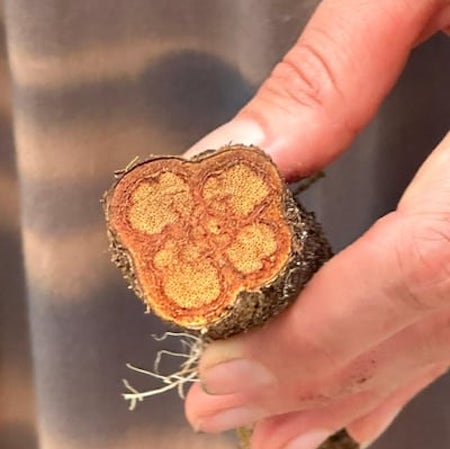
Ayahuasca was first encountered by anthropologists in the mid-19th century. Western awareness grew in the 20th century as explorers encountered it in the Amazon. Fascinatingly, archaeologists discovered a 1,000 year old pouch in a Bolivian burial site which contained Ayahuasca.
In the last 30 years, Western interest has grown dramatically. In fact, plant medicine healing tourism has sprung up the world over. A growing number of people are travelling to the jungle to experience the medicine in its home environment and find deeper healing. After perhaps an encounter or two in a different context, many want to learn more about the traditional knowledge and wisdom of the Amazonian shamans.
International interest in Ayahuasca’s healing properties has also grown. The scientific and psychological communities have begun to investigate its effects and in recent years several studies have been conducted. While some of these studies show interesting results, we at Caya Shobo feel that this medicine cannot be fully appreciated in the context of a scientific study. The Western approach to isolating and “dissecting” parts in controlled laboratory environments disconnects the medicine from its natural state. In that case we are no longer studying a living, breathing, spiritual being, which normally exists in deeply interwoven connection with the rich diversity of life in the jungle. We have altered it and are studying something else, something disembodied.
At Caya Shobo, our relationship with Ayahuasca is in accordance with the Shipibo tradition. We honor its living essence and we hold that modern science is not equipped to comprehend the fullness of its truth or its potentialities. An holistic, multi-dimensional view of Ayahuasca as a spiritual being is borne out by all the Amazonian indigenous shamanic traditions. And this understanding is clearly expressed in the mysterious and beautiful Icaro songs that the shamans sing to us – gifts they say were received directly from the plants.
We believe that only by approaching this medicine with great respect, humility and open-mindedness can we begin to understand its true potential for healing.

Ayahuasca was first encountered by anthropologists in the mid-19th century. Western awareness grew in the 20th century as explorers encountered it in the Amazon. Fascinatingly, archaeologists discovered a 1,000 year old pouch in a Bolivian burial site which contained Ayahuasca.
In the last 30 years, Western interest has grown dramatically. In fact, plant medicine healing tourism has sprung up the world over. A growing number of people are travelling to the jungle to experience the medicine in its home environment and find deeper healing. After perhaps an encounter or two in a different context, many want to learn more about the traditional knowledge and wisdom of the Amazonian shamans.
International interest in Ayahuasca’s healing properties has also grown. The scientific and psychological communities have begun to investigate its effects and in recent years several studies have been conducted. While some of these studies show interesting results, we at Caya Shobo feel that this medicine cannot be fully appreciated in the context of a scientific study. The Western approach to isolating and “dissecting” parts in controlled laboratory environments disconnects the medicine from its natural state. In that case we are no longer studying a living, breathing, spiritual being, which normally exists in deeply interwoven connection with the rich diversity of life in the jungle. We have altered it and are studying something else, something disembodied.
At Caya Shobo, our relationship with Ayahuasca is in accordance with the Shipibo tradition. We honor its living essence and we hold that modern science is not equipped to comprehend the fullness of its truth or its potentialities. An holistic, multi-dimensional view of Ayahuasca as a spiritual being is borne out by all the Amazonian indigenous shamanic traditions. And this understanding is clearly expressed in the mysterious and beautiful Icaro songs that the shamans sing to us – gifts they say were received directly from the plants.
We believe that only by approaching this medicine with great respect, humility and open-mindedness can we begin to understand its true potential for healing.
Science does not include things that defy measurement... like the phenomenological, felt realms of life - like the mind blowing, ego dissolving, terrifying, stunning, on your knees humbling experience that can happen when an individual person drinks a small cup of the plant brew Ayahuasca."
Jennifer Smee, MFT
Traditional vs Modern Use
For centuries, the Shipibo shamans have used Ayahuasca as a service to their communities for healing, spiritual guidance and for connection to the spiritual world. Historically only the shaman (and his or her apprentices) would drink the brew. Community members would then receive healing song Icaro treatment from the shaman without drinking the medicine themselves.
The Shipibo people believe that diseases often have spiritual causes. Ayahuasca allows the shaman to gain information about illness through their shamanic vision. With those insights, the shamans then work with the medicine to access their songs for clearing “energies.” The shamans say they can “see” energies moving with their songs. Where deeper, more extensive treatment is required, they will identify other plant medicines that are best suited to directly treat the issue.
In modern times, the medicine has become popular amongst westerners in ceremonial gatherings where all participants drink the brew. Such ceremonies are usually guided by an experienced shaman or practitioner who sings healing songs and performs shamanic healings. Gatherings without a skilled guide can be highly dangerous and are not recommended.
At Caya Shobo, we are committed to the Shipibo tradition. We are grateful for the healing treatment and skilled management of energies that our master Onánya shamans bring to our ceremonies.
Psychological & Physical Effects
Ayahuasca is a powerful entheogen and can have intense effects on the mind and body. It may induce visions, strong emotions, heightened sensory perception, feelings of connection and joy, or alternately, fear and paranoia – and sometimes all in the same journey!
It is also known to help us revisit buried memories and develop a greater awareness of our behavioural and relational tendencies. Such new insights and perspectives can present us with vital information for making important life changes.
Physically, the most common effect of the medicine is nausea and vomiting, although there may be other effects depending on each individual. Despite the discomfort of vomiting, many experience this as a positive effect. The body undergoes an intensive physical and energetic “cleanse.” Sometimes physical shakiness and dizziness can occur.
Less commonly, Ayahuasca can cause mild heart rate and blood pressure changes. It may be contraindicated for people with certain conditions or who are taking certain medications. At Caya Shobo, we thoroughly assess every guest’s medical status prior to your retreat.
While it is possible to describe the components, chemistry, usage, and typical effects of this powerful ancestral medicine, no one can precisely describe its wonder. Suffice to say it is a beautiful mystery, with the potential to expand our well-being and self-understanding in indescribable ways.
- MEDICAL DISCLAIMER -
Clinicial Research - Therapeutic Benefits
Clinical studies in recent years have shown the potential of Ayahuasca to improve certain health conditions at the cellular, molecular and psychosocial levels.
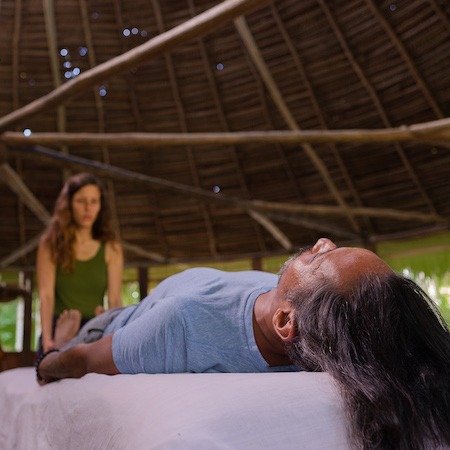
PTSD, Trauma, Depression
Numerous clinical studies have confirmed beneficial effect on emotional regulation, processing of traumatic memories, management of cravings and promotion of emotional healing.
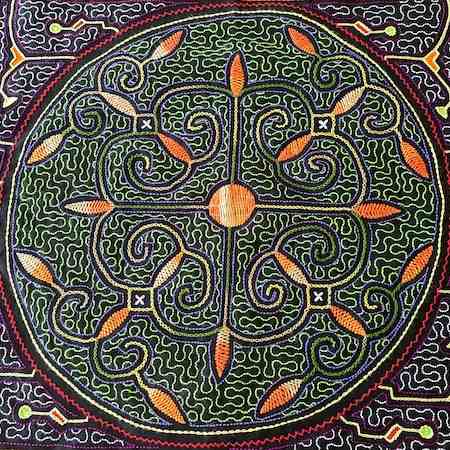
Neuroplasticity
A 2017 study showed increased synaptic plasticity and BDNF levels, both involved in brain repair, suggesting it may be helpful in the treatment or prevention of certain neurodegenerative disorders.
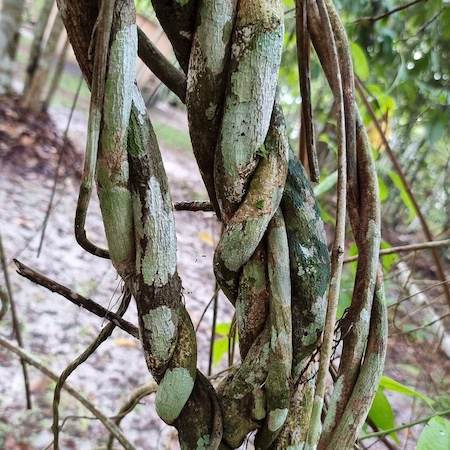
Cancer
Several studies over the past 30 years have shown improvements in colonic, ovarian, uterine, stomach, and breast cancer. It is worth nothing that in some cases other plant medicines were included in the treatments.
Risks & Safe Practices
Ayahuasca is a very powerful brew which is dangerously contraindicated (potentially lethally) with certain medications, substances or health conditions. It also carries significant potential psycho-emotional effects and has a spiritual importance which demands enormous respect and caution.
At Caya Shobo we believe the best way to safely work with this medicine is to follow the ancient ancestral knowledge of the Shipibo shamans. We believe this tribe holds the most advanced understanding of the correct use and risks of working with the medicine. These risks span not only physical, psychological or emotional factors, but also energetic and spiritual considerations. For that reason, we are dedicated to the traditional Shipibo shamanic ways for working with Amazonian plant medicines.
When you reserve an Ayahuasca Retreat at Caya Shobo, we ask you to fill in a health form. We then conduct an in-depth review of your health information. If there are any contraindications or special preparations, we will discuss this with you. Sometimes it may be necessary for you to discuss your plans with your doctor. During your stay at Caya Shobo, a variety of safety protocols must be observed, including in ceremony. Learn more about Safety at Caya Shobo.
- IMPORTANT MESSAGE -
Plant medicines should only be used under the guidance of knowledgeable practitioners.
Combining plan medicines with certain foods, substances, medications or pre-existing health conditions can produce serious adverse effects.
Preparation
To have a rewarding and safe Ayahuasca experience, physical preparation is necessary. Many substances and foods, even some of which may be healthy in our daily lives, can block, interfere or can even be dangerous when consumed in proximity to plant medicines.
In some cases it will be necessary for you to discuss your health situation or changes to your medical regimen with your healthcare provider/s. If you are taking certain essential medical prescriptions, it may not be safe for you to drink Ayahuasca. However you may still be able to experience healing treatment with more gentle plant medicines, or by way of energetic Icaro song treatments and flower baths, as per the traditional Shipibo approach.
In all cases, when preparing for a healing retreat at Caya Shobo, you will be asked to follow a restricted food diet for a period of time prior to attending your retreat. This diet will help to clean your body of congestion and toxins and certain food-groups that do not work well with Ayahuasca. Some of the excluded foods, such as acidic foods and salt, you may expect in a healthy balanced diet. These foods are temporarily restricted because they tend to block or interfere with shamanic plant medicine treatments..
We hold this medicine as sacred. We therefore ask that you observe some personal restrictions around social and sexual energies in order to prepare your own “temple” to best meet this remarkable spiritual teacher.
Ayahuasca Ceremony at Caya Shobo
Ceremonies at Caya Shobo take place four times per week in our traditional ceremonial maloka. They commence at around 8pm in the evening and usually last about four or five hours each night.
After drinking your cup of the brew, you return to your mat and wait for the medicine to take effect. When the energy of the medicine “opens”, our shamans start the ceremony by singing their Icaros for protection and clearing. Experienced facilitators are also present, and available to accompany you if you need help to get to the bathroom.
As you lay on your mat, your own inner journey takes place, leading you through experiences that are unique to you as the night-time jungle sounds accompany you all around. During the ceremony, the shamans come one-by-one to the end of each person’s mat, and sing you a personalized healing song treatment. This treatment serves as both ongoing diagnosis and therapeutic aid. Singing to you in ceremony can allow the master Shipibo shamans to “see” your energy and the status of your Master Plant Dieta process. Sometimes the shamans may recommend additional complementary plant therapies or other shamanic treatments.
Every ceremony is unique and many people experience the medicine in different ways. For some, it can be very visual. For others it’s more physical or insightful. Sometimes it’s gentle, other times challenging. Some may not feel it at all.
In all cases we believe Ayahuasca has something to reflect to us. We recommend approaching the ceremony with an open mind and not too much expectation.
Integration
The shamans say Ayahuasca is a sacred mirror. It can show you important insights about yourself and your life. Sometimes the visions you may see, and even the healing itself, can cause uncomfortable reactions. You may recognize that some things need to change in your life.
Ayahuasca Integration encompasses an exploration of how to bring the experience of the medicine fully into your life. Every retreat at Caya Shobo has a team of experienced facilitators present to help you work through your healing experiences.
We guide you in finding your own understanding, and we help you consider the implications for your life after your retreat. We also have a team of teachers, therapists, and high level facilitators who are available to provide additional (paid) support sessions when you return home after your retreat.